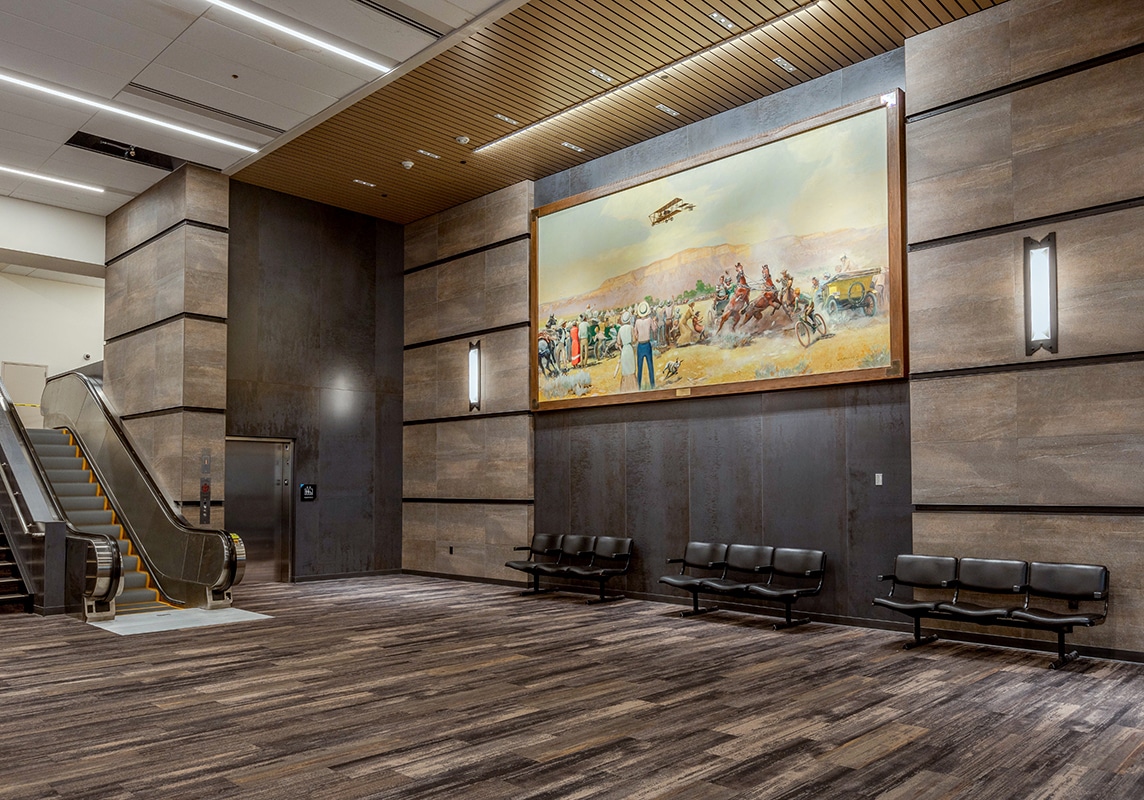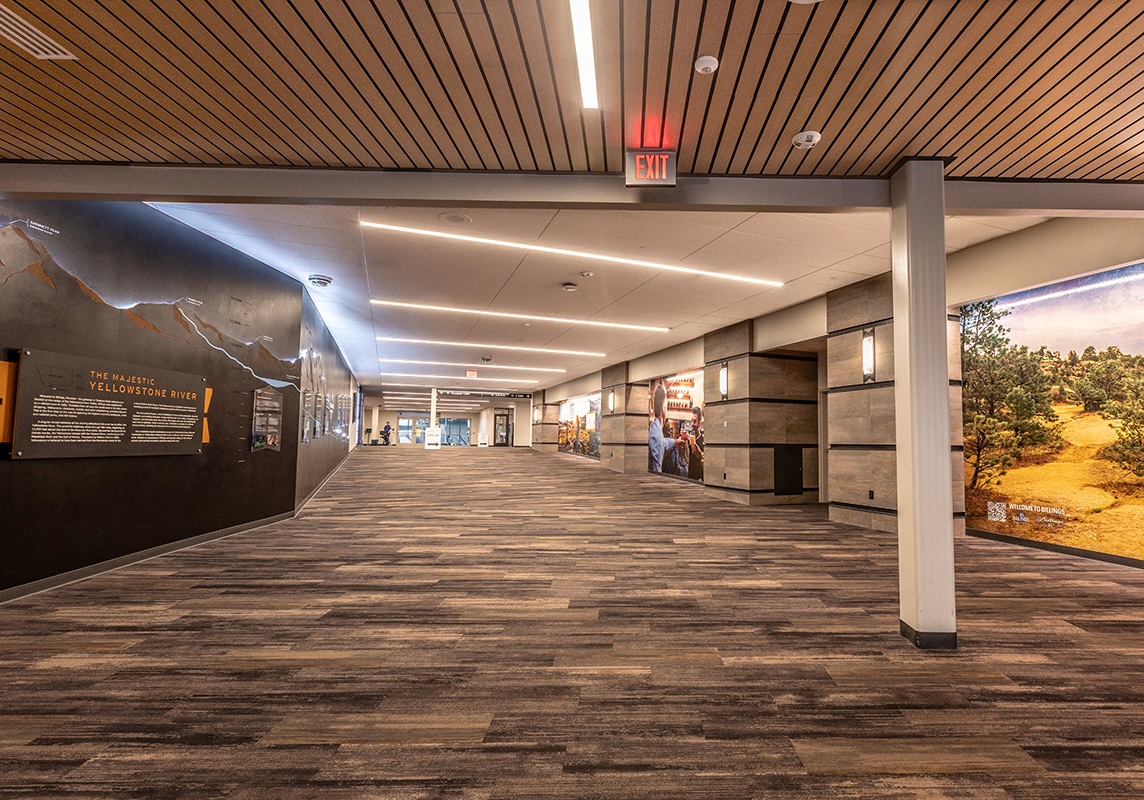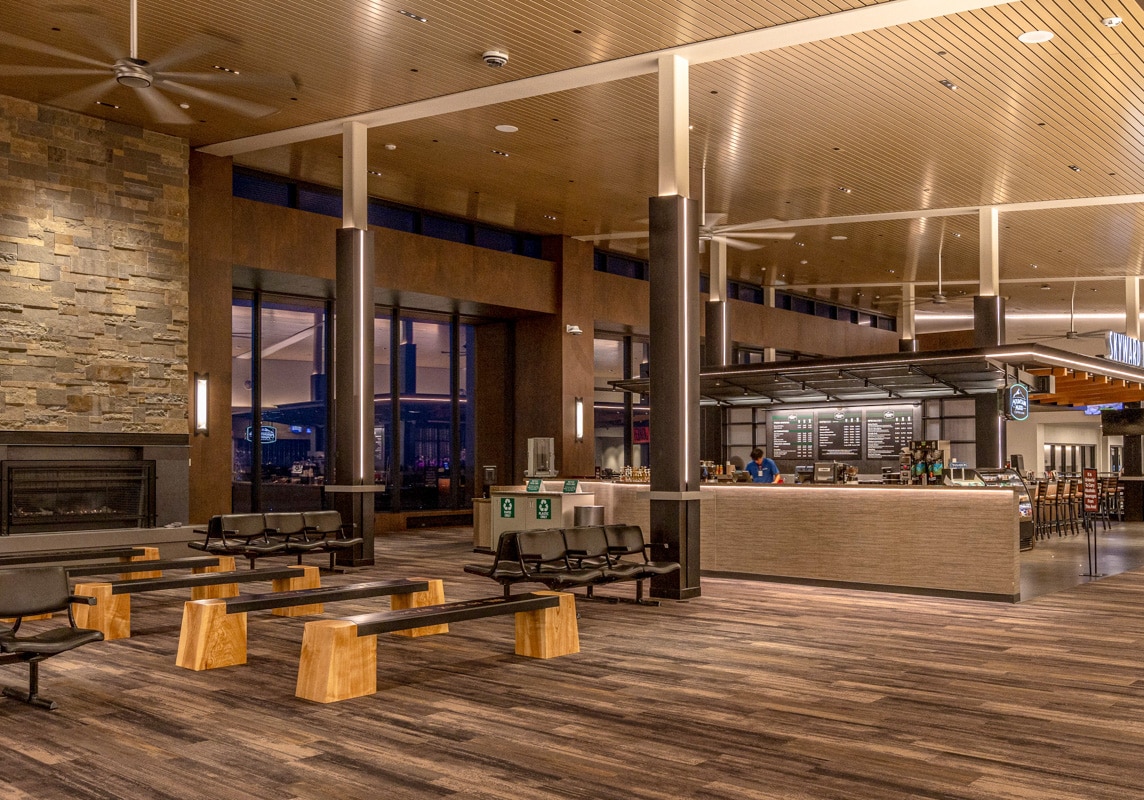
Billings Airport Terminal Concourse Expansion
Traveling to Billings: Enhance, Expand, and Improve
Thirty years after its last remodel, the Billings Logan International Airport decided it was time for an airport terminal concourse expansion. They hired Morrison-Maierle for full engineering services on the project.
The airport had several main goals for the update and expansion:
Improve passenger flow and fix accessibility and usage challenges. The original layout was cramped, had low ceilings, and had poor visibility for passengers traveling through the airport. Because of the high volume of elderly travelers accessing medical services in Billings, it was extra important for the airport to provide an easy-to-navigate experience for passengers.
After getting through TSA, many passengers felt like they had to camp in the holding room to see when their plane was boarding. The new layout allows passengers to use the airport’s amenities while keeping their gates in sight.
Expand the space to accommodate for increased growth (and future growth). We enlarged the hold rooms and increased the number of boarding bridges from five to eight gates, freeing up space for new airlines to enter the airport. The renovated and expanded TSA checkpoint reduced wait times and streamlined passenger flow.
Enhance the overall passenger experience, including adding additional dining and retail spaces. The expansion added a new gift shop, restaurant, and bar area with an aesthetic viewing space. This is a vast improvement over the airport’s limited grab-and-go options. The addition includes a great room with 22-foot or higher ceilings, a large fireplace, and panoramic windows with a view north of the airport.
The bathrooms also received a significant makeover. After overwhelmingly positive feedback from the bathroom renovations on the B concourse in 2015, we wanted to take a similar approach during the terminal expansion. We removed the old facilities and added 30 family bathrooms with a sink, toilet, room for luggage, and baby changing stations in one room. The men’s restrooms contain both family stalls and a row of urinals.
-
Civil engineering
-
Construction administration
-
Electrical
-
Fire protection
-
ICT
-
Mechanical
-
Plumbing
-
Project management
-
Structural
-
Survey
Merging New and Old Systems
We had to connect existing infrastructure with the new addition, a process complicated by the multiple renovations since the 1950s. We worked to connect the electrical, mechanical, and structural systems efficiently with an eye toward easy future expansion and growth.
By far, the most challenging aspect of the project included tying together systems from the previous remodels and the 17 different floor elevations. Structurally, we were dealing with a 17-foot vertical difference from one end of the terminal to the other, and as a result, stairs were prominent throughout the building. To improve the passenger experience, we brought everything together in a cohesive layout that reduced the total number of floors.
Because of the various renovations, we had to do a lot of on-site meetings to evaluate and confirm the locations of existing infrastructure. Through this process, we determined that after the 1970s renovation, passengers no longer walked directly out to the tarmac from the building. However, to achieve this, they covered the sloped original floor instead of remodeling it. Our latest renovation involved going back to dig out the original floors and rebuilding them to fit the new layout.


The Passenger Experience
The project’s primary focus was improving the passenger experience, especially in ways the previous building failed to meet users’ needs. For example, the existing building’s ramps did not meet ADA standards, and passengers struggled to make it up the steep ramps, so much so that the ramp had a button passengers could push for assistance.
With the remodel and expansion, we designed everything to be up to ADA standards, including fixing slope issues that weren’t compliant and eliminating cramped traffic flow problem areas. Other passenger flow improvements include quadrupling the TSA queuing space, moving the security waiting areas away from the entrance doors (helping with heating and cooling concerns), and using a strategic layout with signage that allows people to see the best path of travel easily. The elevator was also relocated from a back corner behind TSA to the front and center for passengers to visually see in the entrance lobby.
The concessionaires bring a great selection of food and coffee, teaming with Stack, a local veteran-owned business, and Mountain Mud, a local women-owned coffee bar. Themes were taken from nearby landmarks and attractions and worked into the design of the building, including the “Yellowstone River wall” along the exit corridor from the concourse. With the updated setup, the Billings airport serves as “the trailhead of Montana” and welcomes people to the state.
Learn more about our Airports work.
